Today’s global access to information and endless competitive alternatives have changed the landscape forever. Customer Experience is now and will likely forever be king.
Neighborhood Insights consists of stories of how to do it right and examples of people, groups and organizations who are making it happen. The content is not intended to be finite. In fact, it should grow exponentially as the waves of change continue making landfall with greater intensity and across more industries.
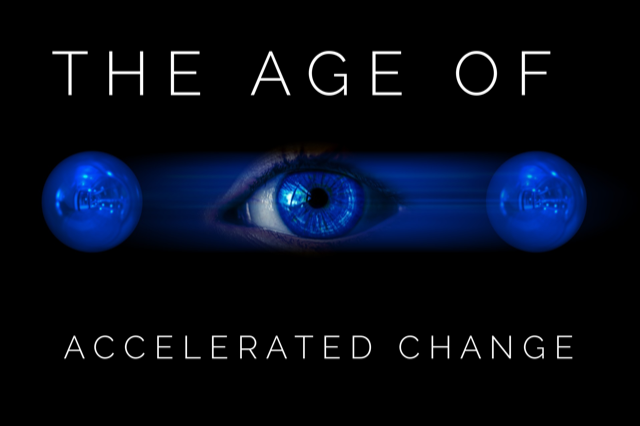
Quantum Leapfrog
The phenomenon experienced by traditional leaders being strategically replaced by advanced thought-leaders charged with exponentially advancing the organization.
It’s easy to identify those traditional leaders. They’re the ones whose intent to smooth the transition from past to present is quickly overcome by a facial expression very similar to a deer in headlights. Attempts to reel in the conversation to a level his/her legacy audience will understand becomes a humorous exercise in futility.
It’s crystal clear in a few short minutes who hasn’t done their homework.

Horse or Cow?
What do you SAY your business’ function is? Does it have anything to do with being the customer’s first choice for the products and services you offer?
Have you ever heard the saying: “A horse drawn by committee is a cow”? While it may seem outdated, isn’t it synonymous with what we do when using data alone to draw up customer experience solutions? A group of data analysts and tech experts go into a room and attempt to answer two questions FOR the customer:
1. Why SHOULD customers choose us?
2. Why WOULD customers choose us?
Then they start drawing on the board, adding their own egocentric ideas and biases, coming up with a final product that THEY BELIEVE customers will LOVE. In their minds, they’ve created a stallion. The only key component they left out was THE CUSTOMER. And all THEY see is ol’ Bessie.
If the customer experience TRULY IS your focus, the four questions you MUST be able to answer are:
1. Why DO customers choose us?
2. Why DON’T customers choose us?
3. Why WILL customers choose us?
4. Why WON’T customers choose us?
What should immediately stand out is that none of those reflect interest in the activities of ANY competitor. Why? Because if you’re allowing competitors to set your pace of customer experience innovation, you will NEVER hold a leadership position. They will ALWAYS be two steps ahead. The only way you can overtake them and stay there is with QUANTUM LEAPS.
Quantum leaps happen when you set your own interests aside and align every aspect of your business with providing the optimal customer experience—-AS ONLY THE CUSTOMER CAN DEFINE IT.
Anything less is unacceptable.
Where you are relative to this wave is determining your stress level:
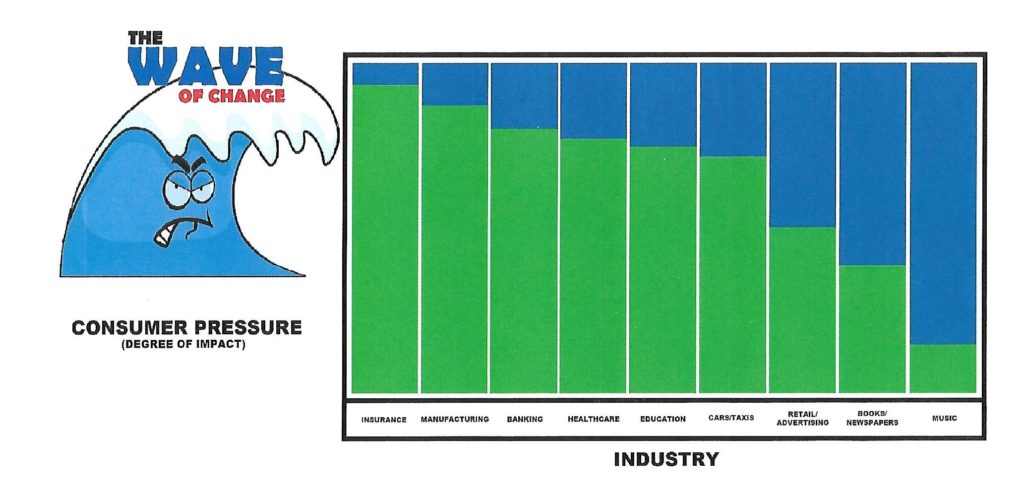
Can you feel the rush? It’s the same thing you feel at the top of the first hill on the roller coaster or when you’re standing at the door of the airplane before your first parachute jump. The difference is that you’re somewhat prepared for what to expect in those experiences. It’s not going to be that way for this one, folks. I hate to tell you this, but “easy” is not a trait of these strategies if you haven’t been paying attention. Here are 5 challenges that you’ll face when you jump in:
1. You think it’s a pool, but it’s really an ocean. A pool is limited by the size of its edges while 80% of the earth is covered by water. It’s now a global economy. Your influence is no longer limited to your own backyard.
2. There are no longer 5 or 6 early influencers out there for you to learn from…there are 5 or 6 million, and many of them aren’t going to offer their advanced services for free.
3. There are no longer 3 or 4 social media platforms to choose from, there are hundreds. People you’ve never met are going to be telling you and selling you on the next big thing. It’s ADHD hell.
4. You’re going to try to retro-fit your old processes into the new models and it’s not going to work. When you start dialing the lead list created from website traffic without permission from the people on it, you aren’t following up, you’re annihilating your brand’s trust and your own reputation for being customer needs-focused.
5. You’re going to be pressed for time because you were still adjusting your swim goggles when the starting gun sounded. Instead of developing a vision and sharing it, you’re going to panic and start paddling as fast as you can to catch up. You’ll be posting just to post, connecting just to say you’re connected, and curating and creating random content that isn’t relevant to the audience that you have no authentic connection with. At the same time, you’re going to be holding on tight to that white donut: The security of all the past processes and strategies that worked for so long. The donut works fine when you’re in the pool. Not quite as effective in the middle of the ocean.
Watch out for sharks.
Working Under Pressure
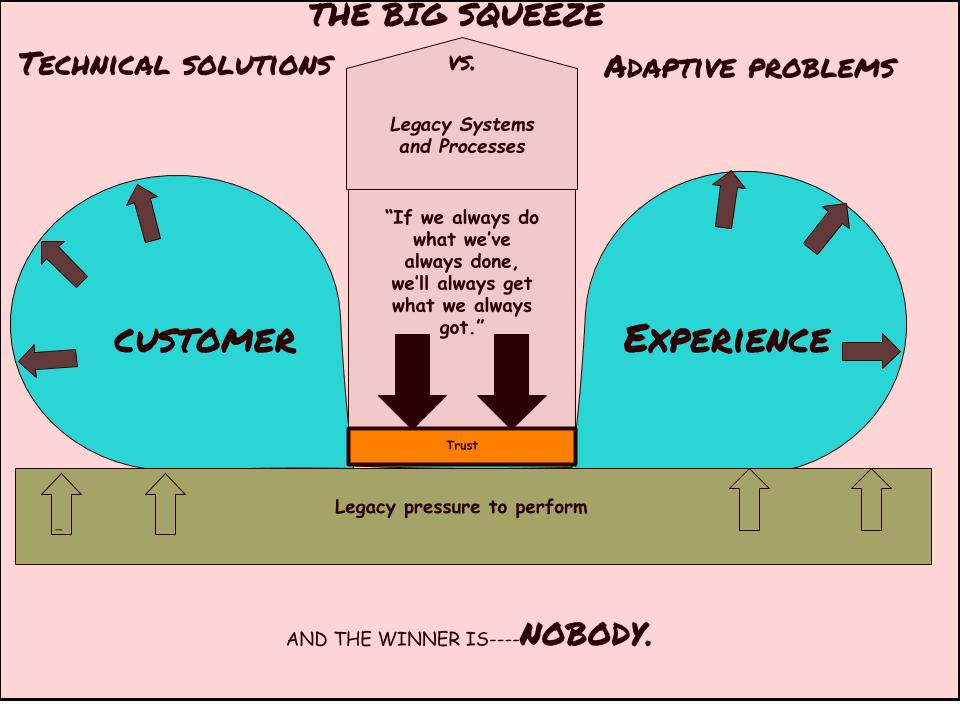
Nobody ever said change was easy, and it’s certainly not slowing down. What many are failing to see is the forest through the trees. In all of the paranoia surrounding AI, IoT, VR, AR, and robots, we’re forgetting one very important fact: People NEED each other. People CRAVE human contact. Perhaps there are some points of an interaction where humans can be replaced with machines, but I would argue that when given a choice, most people would still prefer a living, breathing soul to interact with them, specifically in times of stress or crisis.
Segmentation and specialization processes executed by AI and IoT will allow people to focus on building deeper human-to-human relationships. In effect, individual reps may be serving fewer people, but their compatibility WITH those people will be much higher as well. It’s the perfect breeding ground for both employee AND customer advocacy. Think about classroom size in schools: Smaller usually means more personalized attention from educators. In this case, smaller brand tribes may equate to greater retention and ultimately increased revenue. As trust expands, more and more permission is granted. A tangent to this trust that few seem to recognize is stress level as it relates to work: When smaller, more tight-knit communities are formed, stress levels tend to diminish because open communication is more likely to take place.
Where integration needs to be selective is dependent upon CUSTOMER, not ORGANIZATIONAL, perception.
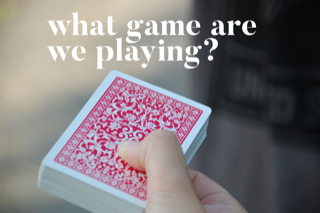
Most people enjoy playing games. To attract players, game creators make fancy boards, cool game pieces, brilliant graphics, then advertise the incredible experiences potential players can expect. Their advertising content is all about highlighting the features and benefits. The problem is: Nobody freely shares the RULES, at least up front. Doing so would potentially alienate those who don’t care about following them. Rules are negative. Rules scare people. Rules “screw” people.
If you’ve ever played cards, you know what I mean. Take Euchre, for example. Euchre rules state that you MUST play the same suit that is led if you have that suit in your hand. You MAY NOT trump that trick. What if you had never played the game before and no one told you that rule until they caught you violating it? The excitement of taking the trick, which is a HUGE part of the game, turns to frustration and anger when your opponents accuse you of cheating two plays later. The experience of being “in the game” is not as positive as it was when you first sat at the table. What game makers fail to understand is that the PERCEPTION of the players is more impacted by the rules of the game than the color of the board, cards, graphics, etc, yet they avoid openly sharing them for fear of losing market share.
5 Reasons why freely sharing rules is a good thing
- People are already looking at the features and benefits long before they are buying the game. For players who have sold themselves based on your brand and introductions from others, knowing the basic rules helps better prepare them for the ownership experience.
- People who are not yet sold on your game may be swayed one way or another, but likely won’t remain on the decision fence. People don’t want to be on the fence anyway, do they? Fence-sitting requires incredible focus, and most people today have more important things to think about.
- People who don’t like to follow rules wouldn’t buy your game. This is not a good thing if you’re focused solely on revenue, but it’s a great thing if your focus is instead on creating remarkable customer experiences. People who refuse to follow the rules will NEVER be advocates. They will make your life and the lives of your team a living hell, and it will prevent you from engaging with other potential players with as much enthusiasm as you normally would.
- People who buy into the rules of your game are your future advocates, provided you don’t change the rules without notifying them or explaining how the changes will provide a better game experience for ALL players.
- Publishing the rules is an act of transparency, the foundation upon which brand trust is built in today’s marketplace. It’s also the missing piece of the puzzle as it relates to the potential buyer doing their due diligence. Features and benefits can be studied all day long, but until that potential buyer can better understand how the rules of play will impact their overall game experience, they will continue questioning the purchase.
There are a lot of “games” in the marketplace and each has its own set of “rules”. Although history has insisted that we should strive to have everybody in the world to play with us, we all know that is simply not realistic. The most important thing to remember is that YOU are the only master. You have the greatest amount of insight about scenarios as they would potentially play out, making you the greatest educational resource on how to play YOUR game.
Some simple advice: Accept that not everyone is going to fall in love with your “game”. Setting the rules and sharing them with the people who WANT to play will only solidify the playing community. If there are rule changes that impact them, be up front in explaining how they make the game experience better for everyone. Then, and, most importantly: HAVE FUN.
Positive energy generated by this transparency and openness within the game’s community will only attract more potential players.

I AM YOUR CUSTOMER
I want a seamless buying experience, especially if purchases are mandated by lending institutions and/or law enforcement.
If I have to make mandatory purchases, fine. But once I’ve signed up, I don’t want to discuss it again unless the price I’m being charged increases for no apparent reason. Then I want to know why—immediately.
If I choose to buy products and services from you, I want to do it when it’s convenient for ME, preferably online. I want the price I was quoted (or better). If your systems can’t make that happen, I’m out.
If I need something more than what I’ve already purchased, the people who will help me understand that are my friends and relatives…not a salesperson who expects me to “come in for an appointment between the hours of 9 and 5” so they can meet their incentive quota.
Speaking of expertise, why should I have to call you every time I have a question? Why can’t you just tell me in simple language how to use what I’ve purchased or post video links to a website? Then if it’s 10pm, I can find the answer instead of thinking about it all night.
If I’m looking for a new company, I ask friends and family what their costs are and how well they like their provider/representative. Then I do research within my networks. If they’re connected to someone I know, I’ll ask for an introduction.
Researching you online means you need to BE online. If I contact you for help, you’d better respond in a reasonable amount of time. If you’re not where I expect you to be, you don’t exist. I’m not going to waste time looking for you.
I drive 2000 miles a month just taking my children to their activities. By the time I get home, it’s 8pm! Why do you think I disconnected my landline? All I want to do at night is change into pajamas, grab a beverage, and hit the couch with DVR remote in-hand.
How much do you spend on advertising? Direct mail, influencer marketing and sports sponsorships must cost a fortune! One more thing: My friends and I aren’t stupid: We know that the little yellow “Ad” tag by your name in search results means you’re paying somebody to put you there.
What am I looking for in a brand representative? I’d still prefer a personal relationship. I’ll even add your number to my contacts if I trust that the only reason you’ll contact me is to share something you know I’d be interested in or I or my family is in some sort of imminent “danger”. On the other hand, if you refuse to accept my way of doing things, I’m fine with getting my stuff from someone who will.
The choice is yours.

“I’m Your Huckleberry”
One of the greatest movie lines in history came from Val Kilmer, who played Doc Holliday in “Tombstone”. It’s the climax when Holliday confronts Johnny Ringo, one of the leaders of the Texas Outlaws. Ringo was expecting Wyatt Earp, whom he knew he could defeat in a gunfight. Instead, Holliday came from behind a tree and uttered the immortal words: “I’m your Huckleberry.” The instant Ringo saw Holliday, he knew his days were over. Ringo was armed with appropriate information, but a change in his plan adversely affected his outcome.
Custer’s Last Stand
Another leader who didn’t know what he didn’t know was George Armstrong Custer. In June 1876, Custer led his troops to battle at Little BigHorn. He assumed, incorrectly, that his military intelligence and superior technology would quickly overpower the enemy, which would result in an immediate victory. What he didn’t know was that he was outnumbered. By the time he found out, it was too late. His cavalry suffered one of the biggest defeats in US Military history.
Point Taken
A true leader plays the game with their eyes up, like a great point guard on the basketball court. He or she sees the plays develop and knows where their teammates should be positioned every second. They usually aren’t the scoring leaders, but rarely does the team win without them.
“What kind of leader are YOU?” versus “What Kind of Leader ARE you?”
A small shift in emphasis from one word to another can change the attitude of the response from an upbeat, positive, team building one to a defensive, self-centered, egotistical one. Your non-verbal response (or reaction) to that question will speak far louder than your words.
Don’t get upset, but what kind of leader are you?
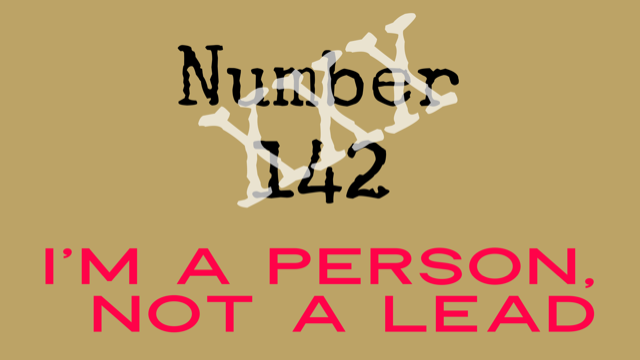
What is your prospect objecting TO (besides being called a PROSPECT)?
Every sales representative is taught how to overcome objections, especially in the auto industry. In one training course, the instructor states, “It takes thirty-seven ‘No’s to get to a ‘Yes’”. Some of the most common were:
- Product: “I don’t like the color.” “The seats aren’t soft enough.”
- Price: “Wow, THAT’S a lot of money!” “I can’t make that large a monthly payment.”
- Presentation: “I don’t understand how this feature works…could you explain it again?” “Did you hear what I said? I don’t need a vehicle that can do THAT.”
Each category of objection impacts the customer experience. However, the PROCESS today isn’t the same as it was twenty years ago, at least to the only party that matters: THE CUSTOMER. That’s because today’s customer, by the time they get to the sales desk, has already decided to buy about 85% of the time—and they haven’t even SPOKEN to a sales representative yet!
Negotiating a car deal has always been one of the most uncomfortable experiences in the world for a customer, but it’s getting some company on the “most hated” list. Not necessarily products and services (have you ever test driven a BMW M-2?)—More specifically MARKETING and sales processes. When objections to them start rolling in, what will the responses be to the following questions?
- How did you get my name/number/contact information?
- Why are you REALLY contacting me?
- What’s in this for you and is it worth more to you than me?
That’s the bottom line as to why your bottom line may be suffering.
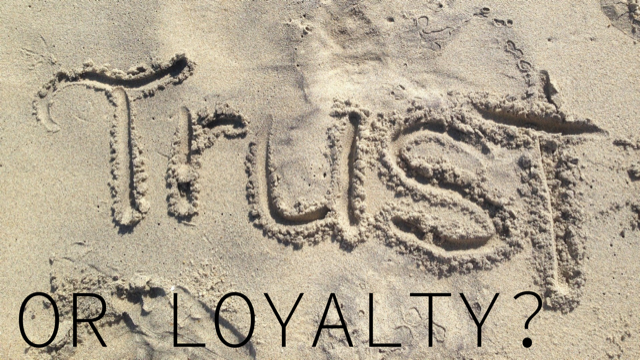
What Comes First, Trust or Loyalty?
Customers can be loyal to brands (and it’s greatly appreciated when they are), but trust consists of a more human element. How does a customer choose a brand in the first place? Likely a recommendation from someone they know, like, and yes, trust. However, if they stay engaged with that brand solely based on marketing and advertising, how superficial are the products or services they use compared to their needs? The more important the need, the deeper the relationship being sought with a provider.
Trust is a belief that a desired or anticipated outcome will result, regardless of the number of times an activity is performed. Loyalty occurs after outcomes are produced by someone or something over time. If an outcome is positive and anticipated, negative and resolved, or on some occasions positive and unanticipated (meaning it was a good surprise to the subject), loyalty is built. If the outcome was negative, unanticipated, and unresolved, loyalty is destroyed.
Brands can destroy loyalty the same way people can lose trust. The difference is, loss of brand loyalty breaks down a company. Trust breaks down a relationship.